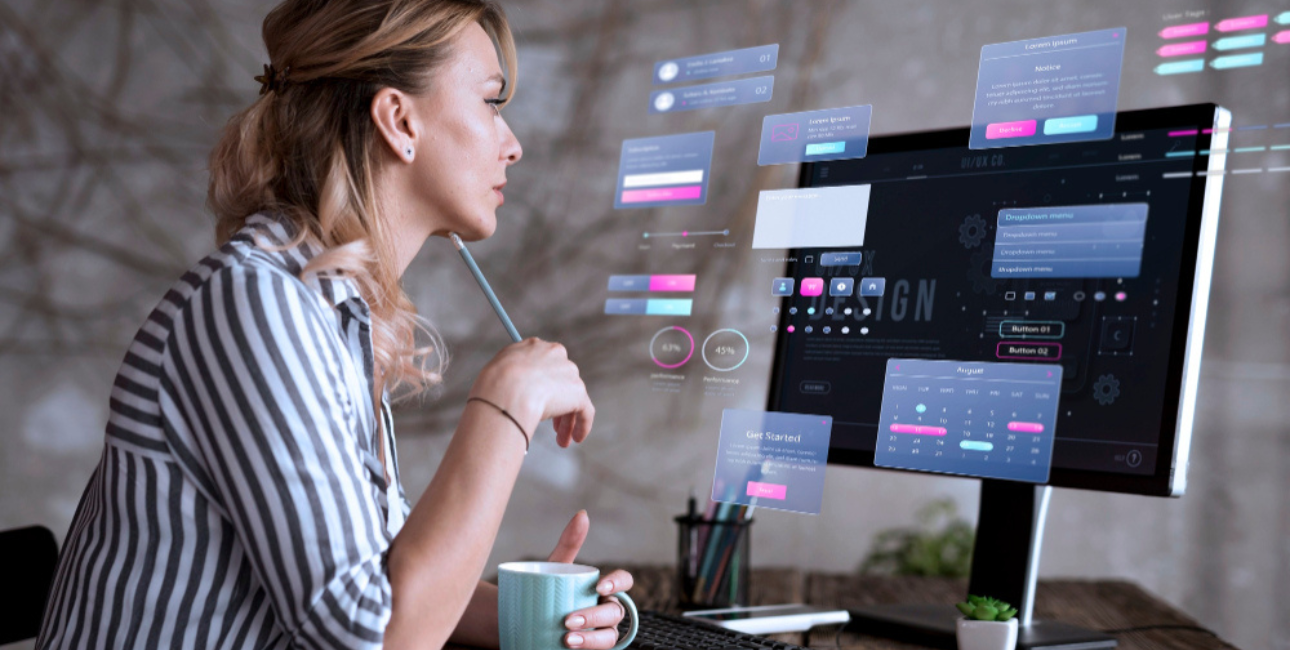Inclusive Design: How Website Accessibility Boosts User Experience and Business Growth
5 Mins Read
Published on: 13 January 2025
Last Updated on: 16 January 2025

- What Is Website Accessibility?
- The Reason as to why Website Accessibility Is Important:
- 1. Amplifying Your Audience
- 2. Improving Customer Interaction
- 3. Realizing Legal Obligations
- 4. Better Search Engine Optimization
- What Is Inclusive Design?
- Introducing Inclusive Designs: Bring Improvement In Website Accessibility
- 1. Add Alt Tags to Images
- 2. Captions and transcripts should be included in videos
- 3. Allow Keyboard Navigation
- 4. Maintain High Contrast While Designing
- 5. Schedule Regular Accessibility Tests
- Real-World Impact of Accessibility
- The Business Case for Accessibility
- Conclusion
In these modern times of tech-savvy individuals, websites are the backbone of any business or organization. Most people are concerned with the design and usability of their website, while commercial website accessibility is often ignored.
This mentality can prevent a large segment of society from acquiring relevant information, goods, or services. Thus, it is clear that website accessibility is not simply about obeying rules.
It includes all users and encourages enhanced user experience and business objectives. This is where the concept of inclusive design comes in.
What Is Website Accessibility?

Commercial website accessibility policy defines the actions necessary to ensure that people with disabilities can easily use websites. Disabilities can include the visual, auditory, motor, or cognitive.
For instance, a blind person may use a screen reader to get information on a website, and a person with limited ability to move may rely more on the keyboard than the mouse to access a site.
When you consider accessibility first and foremost, you help everyone consume content appropriately, no matter their capabilities.
The Reason as to why Website Accessibility Is Important:
Website accessibility is very important, and it is not without reason. Here are some of the reasons mentioned.
1. Amplifying Your Audience
Around one billion people across the globe live with some kind of disability, according to a report done by the WHO. Making your website accessible means ensuring you have a greater target audience, increasing your reach and, thus, potential clients.
2. Improving Customer Interaction
Interface elements such as easy navigation, font types, and video captioning make it easier for every person to use a site rather than just those with impairments. People using mobile phones, in noisy environments, and even those who are in a hurry are assisted by these modifications.
3. Realizing Legal Obligations
Laws such as the 2010 UK Equality Act or the Americans with disabilities act require that websites be easily accessible to everyone. Otherwise, legal battles and fines abound, with possible reputational loss.
Addressing issues dealing with accessibility goes a long way in meeting legal requirements and keeping a step ahead in the future.
4. Better Search Engine Optimization
Accessibility is in tandem with search engine optimization (SEO). The inclusion of alt tags on images, proper arrangement of the content, and appropriate headings make it easier for search engines to locate the sites, and hence, more visitors are attracted.
What Is Inclusive Design?
Inclusive designs are known for removing all kinds of assumptions and biases from a website. This is what makes the users feel that they are included and not ignored because of demographics, impairment, or any other circumstances.
UX design and accessible web designs are important parts of an inclusive website. Accessible designs take care of the barriers that cause hindrances in entering, and UX designs are the data-driven approach for designs that validate and test how real users will engage with the website.
Introducing Inclusive Designs: Bring Improvement In Website Accessibility
Anyone can make an accessible website without it being a tough job. Here are some tips given:
1. Add Alt Tags to Images
Alt tags function as an explanation of the image to a screen reader. In other words, if a conference room picture is provided in the image, it should be written as ‘Team members taking a conference room for discussing a project.’
2. Captions and transcripts should be included in videos
For hearing-impaired users, videos cannot be accessed without captions or transcripts. This also helps users who are watching videos in a loud environment.
3. Allow Keyboard Navigation
Make sure that users are at ease, and for them, your site can only be navigated through a keyboard. Check all menus, forms, and buttons to ensure that there is alternate access without a mouse.
4. Maintain High Contrast While Designing
For users that have low vision, using high-contrast color combinations for the text and the background increases readability but color should not be the only means used for transmitting critical information.
5. Schedule Regular Accessibility Tests
Tools such as WAVE, Axe, and Lighthouse can be used for determining accessible gaps and closing them. Regular testing looks after whether you are meeting all the regulations and that the users’ experience is uniform across the board.
Real-World Impact of Accessibility
Assistive technology such as screen readers and audio descriptions has allowed many more people to engage in activities that previously presented significant challenges.
Consider a visually impaired person contemplating an online purchase; if the website does not include alt tags on the images they want to purchase, this can become difficult. However, some photos are labeled along with simple linking methods for those people willing to take those actions.
Apple and Netflix show us how inclusive design should be achieved using Voiceover and audio description in their products. Why is it worth investing time and resources in designing inclusive experiences?
The Business Case for Accessibility
For starters, it is our ethical and legal duty as global citizens to shoulder. Furthermore, accessibility can assist the company in increasing its reach. A well-designed website indicates that the owners of the site value acceptance of diversity, which strengthens the bonds of trust and loyalty with the customers.
In addition, usability only increases the site’s effectiveness; more traffic becomes engaged, leading to lower bounce rates and higher conversion rates.
Conclusion
Website accessibility guarantees that all users will be able to use a site without any difficulties, whose presence is opposed by many, which is wrong from all points of view. It should go without saying that everyone can build a site that everyone can use.
Still, inclusive designs, sometimes specific changes, even small, like including alt text, which allows everyone with any form of involuntary or disability, keyboard navigation, and regular audits, do make a difference.
It is not surprising that investing in making the product accessible to all people is not simply altruistic and good for the overall social sphere of the economy but also very much business savvy. Take the first step and create a digital environment that will be comfortable for everyone, regardless of disabilities.
Read Also:


















Comments Are Closed For This Article